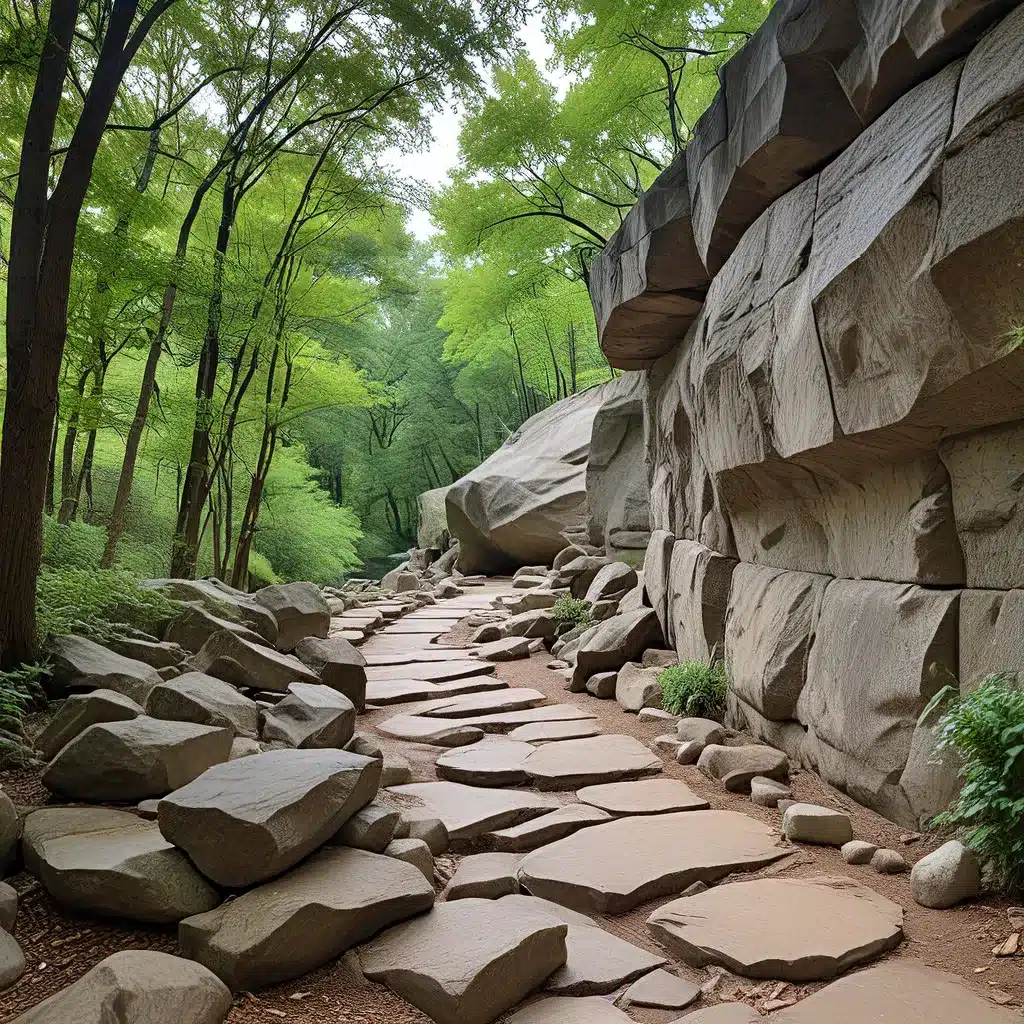
Nestled within the heart of the nation’s capital, the Rock Creek Park stands as a testament to the enduring vision and dedication of the Olmsted family, whose illustrious legacy has left an indelible mark on the landscape of American parks. This urban oasis, spanning over 2,000 acres, is a true gem in the crown of Washington, D.C., offering visitors a serene respite from the bustling city life.
The Olmsted Legacy and the Birth of Rock Creek Park
The story of Rock Creek Park is inextricably linked to the Olmsted family, whose unwavering commitment to preserving the natural beauty of the land has shaped the park’s evolution over the decades. Frederick Law Olmsted Sr., the renowned landscape architect, had long recognized the significance of the Rock Creek valley and its potential as a public space. As early as 1886, Olmsted Sr. warned of the “charmingly wooded glen” being in private hands, subject to potential development and destruction.
It wasn’t until Olmsted Jr. was selected to serve on the McMillan Commission, tasked with developing the core and park system of Washington, D.C., that Rock Creek Park finally received the attention it deserved. Recognizing the inherent value of the natural landscape, Olmsted Jr. and his brother, John, proposed a comprehensive plan for the park, dividing it into six distinct areas that remain integral to its character today.
Preserving the Natural Wonders of Rock Creek Park
The Olmsted brothers’ vision for Rock Creek Park was rooted in the belief that the valley along the creek and its tributaries should be preserved in its natural state, with only the addition of scattered picnic spots to enhance the visitor experience. The western hills and plateaus, designated as the “Woodland” area, were slated for more intensive use, with the inclusion of hiking paths and numerous picnic groves.
Further beyond the Woodland, the Olmsted brothers identified an area they deemed the “Wilder Woodland,” which was to be preserved to the highest degree, allowing the natural beauty and untamed character of the landscape to flourish. This dedication to preserving the park’s pristine environment has endured over the decades, ensuring that visitors can still enjoy the serene and untouched charm of Rock Creek Park.
Embracing the Park’s Diverse Recreational Offerings
While the Olmsted brothers’ primary focus was on preserving the natural wonder of Rock Creek Park, they also recognized the importance of providing diverse recreational opportunities for the community. The “Valley Section” along the banks of the creek and its tributaries was envisioned as a place for quiet contemplation and passive enjoyment, while the “Woodland” area was designed to cater to more active pursuits.
Today, the park offers a wide range of activities, from hiking and biking along the winding trails to picnicking in the lush, shaded areas. The park’s natural features, such as the cascading waterfalls and serene meadows, provide ample opportunities for visitors to immerse themselves in the beauty of the outdoors. Additionally, the park’s equestrian center and tennis courts cater to those seeking more structured recreational activities.
Evolving with the Changing Needs of the Community
As the city of Washington, D.C. has grown and evolved, so too has the role of Rock Creek Park in the lives of its residents. The Olmsted brothers’ vision for the park has continued to guide its development, ensuring that it remains a vital and adaptable resource for the community.
In recent years, the park has seen the addition of educational programs and interpretive exhibits that highlight the rich natural and cultural heritage of the area. The Rock Creek Park Nature Center and Planetarium, for instance, offers visitors a deeper understanding of the park’s diverse ecosystems and the night sky above.
Moreover, the park’s trail network has been expanded and enhanced, making it easier for visitors to explore the entirety of this vast urban oasis. The Rock Creek Park Trail, which runs the length of the park, is a popular destination for runners, cyclists, and hikers alike, offering stunning vistas and a peaceful respite from the city.
The Enduring Legacy of the Olmsted Brothers
The influence of the Olmsted brothers can be seen not only in the design and development of Rock Creek Park but also in the broader preservation of natural spaces within the nation’s capital. Their unwavering commitment to the conservation of the country’s natural wonders has left an indelible mark on the landscape, inspiring generations to come.
Today, as visitors stroll through the serene pathways of Rock Creek Park, they can’t help but marvel at the vision and foresight of the Olmsted brothers. Their legacy lives on, not only in the maintenance and stewardship of this urban oasis but also in the countless parks and green spaces that have been inspired by their pioneering work.
The Old Stadium Journey website invites you to explore the rich history and architectural marvels of stadiums and parks across the country, including the Olmsted-designed gems that continue to captivate and inspire. By learning about the stories behind these iconic spaces, we can better appreciate the lasting impact of the Olmsted family’s enduring contribution to the nation’s landscape.

